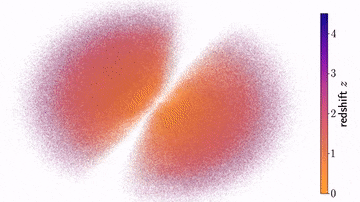The Phenomenon of the Solar Eclipse
The recent total solar eclipse that occurred on April 8 captivated the attention of millions of skywatchers across North America as the moon obscured the sun, turning daytime skies dark. This natural spectacle drew in enthusiasts from various regions, eager to witness this rare cosmic event. While some experienced only a partial eclipse, others situated within the path of totality enjoyed the full splendor of the moon completely blocking out the sun.
The Path of Totality
The eclipse’s path of totality spanned approximately 115 miles wide and 10,000 miles long, traversing four states in Mexico, 15 states in the U.S., and seven Canadian provinces. A total of 31.6 million individuals in the U.S. alone resided within this path, anxiously awaiting the extraordinary moment when the moon would align perfectly with the sun.
For many spectators, like 18-year-old Diamond Cromwell, the eclipse surpassed all expectations. Cromwell, a freshman studying business, was awestruck by the celestial display, particularly during the 3 minutes and 14 seconds of totality. Through his eclipse glasses, he witnessed the sun’s corona emerge as the moon blocked its rays, creating a surreal atmosphere that left a lasting impression.
The Science Behind the Eclipse
A total solar eclipse occurs when the moon precisely matches the size of the sun in the sky or slightly exceeds it, leading to the complete coverage of the sun’s disk. This alignment offers observers a unique view of the sun’s outer atmosphere, known as the corona. The moon’s apparent size in the sky varies due to its elliptical orbit around Earth, causing slight fluctuations in its size as it orbits closer or farther from our planet.
The journey of the moon’s shadow across the Earth unfolded as a gradual progression, lasting over three hours before it finally dissipated at sunset in the Atlantic Ocean. Enthusiasts positioned along this path, like those in Poplar Bluff, Missouri, eagerly awaited the eclipse, fostering a sense of camaraderie and excitement among fellow eclipse watchers.
Future Eclipse Events
As eclipse chasers look forward to upcoming celestial events, the next total solar eclipse is set to occur on August 12, 2026, visible from Greenland, Iceland, the Atlantic Ocean, and Spain. Subsequent eclipses in 2033 and 2044 will grace North America, offering residents in various states the opportunity to witness this captivating phenomenon.
While nature’s unpredictability may occasionally obscure the view, as observed during the recent eclipse in Rochester, New York, where cloud coverage tempered the spectacle, the awe-inspiring nature of a total solar eclipse remains a powerful reminder of the wonders of the cosmos.
Image/Photo credit: source url





